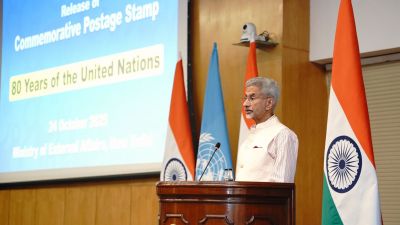Fire Academy yet to take off
NAGPUR, APRIL 14: It has taken more than two decades for the Union Home Ministry to agree ``in principle'' for building a compound wall a...

NAGPUR, APRIL 14: It has taken more than two decades for the Union Home Ministry to agree “in principle” for building a compound wall around the sprawling 43.35-acre land it has acquired here for the ambitious National Fire Academy project.
No wonder the project, which envisages among other things, a well-equipped research and development cell for studying fire incidents and suggesting ways and means to minimise the same, remained in limbo all these days.
The idea was to shift the NFSC the only academic institution of its kind in South-East Asia which imparts specialised training in fire engineering courses from its present premises, along the Palm Road at Civil Lines, to the land acquired at Byramji Town, way back in 1977 and simultaneously, provide the present premises to the National College of Civil Defence, a sister concern of the NFSC, both of which come under the Ministry of Home Affairs.
As of now, the authorities at the NFSC have few reasons apart from the proverbial “paucity of funds” toexplain the delay in setting on course the Fire Academy project in right earnest.
“Everything has been finalised on paper with the Central Public Works Department (CPWD) even submitting plans for raising the Academy at the Byramji Town land,” NFSC director K C Wadhwa said.
He was, nevertheless, uncomfortable when asked what had rendered the project such a long-drawn affair. And one can understand his predicament, for any progress in the project is to be effected by the decision-makers, ie, the Director-General of NFSC and the Secretary to Ministry of Home Affairs, sitting in New Delhi. “The Director General has agreed in principle to start with the construction of the compound wall around the acquired land during the ongoing year. This would entail considerable cost,” Wadhwa said.
Apart from this, a separate land, admeasuring around 14.6 acre, had been acquired opposite the VRCE college for building residential premises of the proposed Academy staff, he pointed out. The entire project, as per CPWDplans, is expected to be completed within a period of five years.
That, however, remains a distant proposition considering the pace at which things are moving at present. While the Ministry takes its own time, the project has gone through a considerable cost escalation.
Six years ago, it was estimated to cost Rs 20 crore and now the projected cost has gone up four-fold touching a staggering Rs 80 crore mark. And yet, there are no concrete signals about when the project is set to take off in the true sense. Meanwhile, Wadhwa told reporters that the NFSC was gradually decentralising its activities by organising low level fire engineering courses at places other than Nagpur.
One such course was conducted in Chennai last year but was discontinued after the institution there was found lacking in resources. However, a six-month course is being conducted successfully at the Central Industrial Security Forces (CISF) unit at Deoli and another one is set to commence from July this year at Bangalore.
He observedthat the fire-fighting technology in India lagged considerably as compared to the one available in advanced countries like the United Kingdom, United States and Russia. “What I had come across during a study tour to the UK some six to seven years back is yet to be introduced in the country.” “Even today, we have to rely on the expertise from developed countries like the US and Russia in capping fire at installations like oil wells,” he observed.





- 01
- 02
- 03
- 04
- 05


























